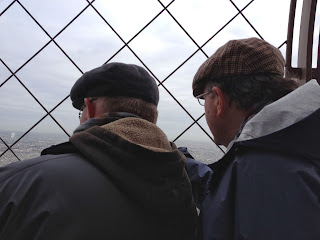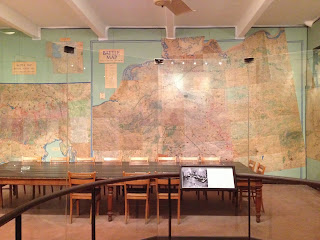On Tuesday we went to the Orsay. The cavalry of the Republican Guard followed us most of the way there, and we would never have known if a Frenchwoman had not told us to turn around and look. I still don't know what they were doing, but they made an impressive parade.
We were among the first in line at the Orsay, which meant that we got to be alone, for a short span of time, with the Van Goghs. This was one of the highlights of the trip for Thomas. We also got to see the Impressionists upstairs with much smaller crowds than we had in October. November may be cold, but it has some distinct advantages for the Paris sightseer. In the afternoon we climbed the Montmartre once again to show Thomas the view.
On Wednesday we found ourselves in Versailles again. We toured the chateau in the morning, again with substantially reduced crowds.

Even though it has been cold and overcast for the past few weeks, the sun came out and shined bravely for us while we were in the Marie Antoinette Gardens, just to make us miss this place all the more.

This morning Thomas and I visited Napoleon's tomb and toured the Army Museum, sating our lust for armor, arms, and armies. Evelyn stayed home and packed and cleaned. We paid for the maid to clean our house after we're gone, but Evelyn doesn't want to leave a dirty house for the maid.
I'm ready to come home, and yet I don't want to leave. I certainly don't want to fly home on an airplane. I told Dick and Jeanne Rundell while they were here that my idea of heaven would be to work all week at BYU-Idaho, meet my Las Cruces friends at Chope's on Friday night, spend Saturday in the Louvre and the Luxembourg Gardens, and have dinner with my family on Sunday. I'm afraid mortality doesn't work like that. In this fallen world we don't have a fulness of joy.
But sometimes we can come pretty close.

























































